Aphids on tomatoes: how to fight during flowering and what products to choose for processing tomatoes
Get delicious ripe ones on the table tomatoes from the garden - the task of many summer residents. But this requires a lot of work, and protecting plants from diseases and pests is sometimes difficult. Inexperienced gardeners may not even understand that the tomatoes are sick and may not take timely measures. How to identify an aphid infestation and effectively fight it - let's talk about this in detail.
What are aphids?
This small pest belongs to the insect kingdom, the suborder Hemiptera. A distinctive feature is a specially designed oral apparatus, which is a piercing-sucking proboscis.
In total, there are about 4,000 species of these insects in the world. They can be winged or wingless, capable of same-sex reproduction and so-called viral reproduction on the body of the “host”.
Harm of aphids to plants
The aphid feeds on the sap of the plant, digging deeply into its “body” with its proboscis. Insects not only suck out the sap, settling on leaves and stems in whole colonies, but also carry viruses. At the sites of their settlements, fungal formations arise that are destructive for garden and vegetable crops.
Over the summer, the insect leaves behind three generations of larvae, which do nothing but “milk” the plants. Having sucked the juice from one, they move on to the next, so if timely measures are not taken, aphids can ruin the entire harvest.
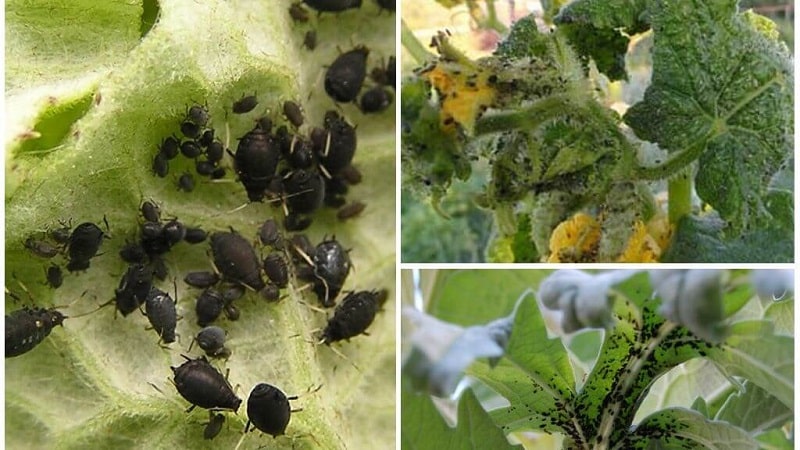
Signs of defeat
Insects do not really like the fragrant greens of tomatoes, but they can also attack them if there is a lack of nutrition for their offspring. Black, white, tomato, and melon aphids grow on tomatoes. You can understand that a crop is infected by external signs.
Since colonies of insects cling to the entire lower part of the leaves, soon their edges begin to deform, curl, and wither. If the plant is affected, black and white aphids will be visible on the stems as a black or powdery coating.
Another indicator of the presence of aphids is sticky shiny spots on leaves and fruits. This is the so-called honeydew - a sweetish liquid secreted by aphids. It falls from the bottom of the leaf to its front side or fruit and is baked in the sun. Ants, constant allies of aphids, greatly value such a high-calorie product. They tickle the aphids with their paws, and they give them a drop of their sweetness. Ants look after their nurses, so they often carry them from one plant to another.
If you see such signs in the beds, this is a signal that you need to save the plants.
How to deal with aphids on tomatoes: the best methods
The use of certain methods in the fight against aphids directly depends on how far they have progressed in destroying tomatoes, as well as on the stage of plant growth. Having assessed the existing signs of damage to tomatoes, prepare a plan for how to treat the tomatoes and how to get rid of the persistent pest.
Chemical activities
Chemical protection methods are used only before the flowering stage of plants and in the event that the reproduction of insects has become total.
Important to remember! Treatment with chemicals is harmful to tomatoes and humans; be careful when using them.
Chemical agents affect insects in different ways: through simple contact of aphids with the chemical, intestinal penetration, and respiratory organs. There are also drugs that, when absorbed by the root system, penetrate the plant’s body and make it poisonous to pests. There are many different chemicals sold on the market in the form of powder, tablets, and solutions. You need to choose the one that is relevant to your problem.
The most popular chemicals are:
- "Prestige" - concentrate for killing aphids on garden and melon crops. Diluted 1:10 for numerous insect colonies.
- "Intavir" - pills. Upon contact with insects, the product paralyzes and kills them. 1 tablet is diluted in 10 liters of water.
- "Oberon" - liquid concentrate used in the initial stages of aphid emergence. Dilute 3 ml per 10 l. If most of the plants are infected, the drug has no effect.
- "Commander" - product in the form of granules and liquid. Acts as a contact-intestinal chemical. Action time: 6-8 hours after treatment. Dilution proportions: 2 ml per 10 liters of water.
When processing chemicals, safety rules must be followed. When spraying preparations on plant leaves, you need to wear rubber gloves, a respirator and goggles. Strictly follow the instructions for the drug. Most chemicals are addictive to insects, so they are not used more than 2 times per season.
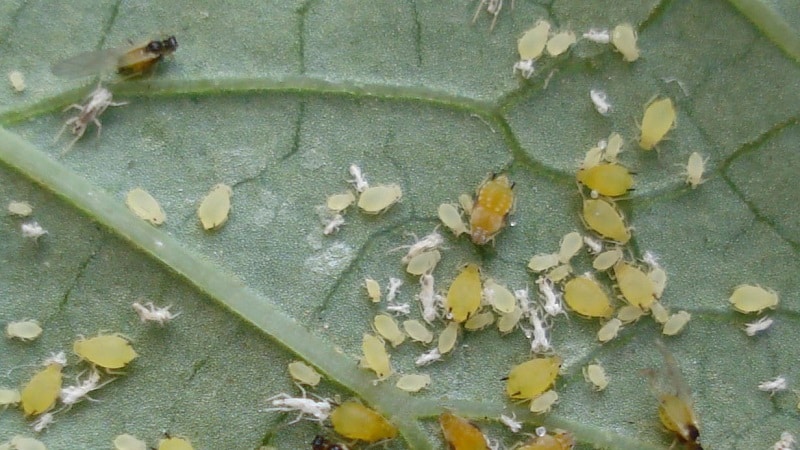
Biological techniques
Such techniques include all actions to create conditions so that aphids do not feel at ease in the garden plot.So, for example, by planting flower beds of amaranths, marigolds, and daisies in your garden plot, you will attract insects that are always ready to feast on aphids: ladybugs, mantises, wasps, hoverflies, lacewings, flies. By attracting birds to your garden, you will also reduce the aphid population on your tomatoes. Tits, robins, and sparrows will not refuse such easy prey.
You can significantly reduce the number of aphids by getting rid of ants, since it is the ants that transfer aphids to plants. They protect their feeders and protect them, transferring wingless individuals to new “pastures”. And when the aphid sucks in juice, the ants “milk” it, collecting the sweet secretions. If the ants' path to the planted area is cut off, their wingless friends will also disappear. To fight ants, there is a powder called “Delicia”, which is sprinkled on anthills.
From popular experience
Many gardeners prefer to use methods that are widely used among the people, because they do not harm the plant. However, they will be effective if you regularly inspect the seedlings for aphids and, if they are found, immediately begin to act.
To spray tomato plantings use:
- infusions of chamomile, tobacco, marigold, dandelion, onion peels, garlic, hot pepper;
- decoction of tansy, alder, pine needles;
- aqueous solution of wood ash;
- dry ash (spray on leaves);
- soap solution (spray only);
- smoke;
- flea shampoo for animals (half a bottle for 8 liters of water).
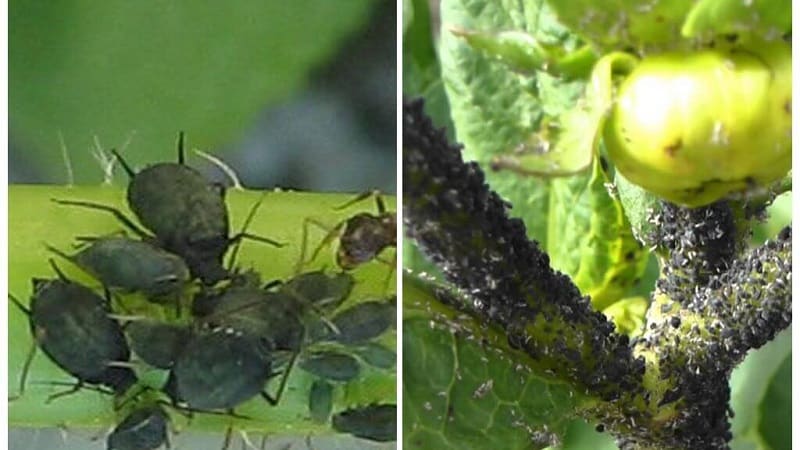
Mechanical methods for killing aphids on tomatoes
Most summer residents avoid chemicals. If you have neither soap nor ash at hand, one effective method is to collect aphids from bush branches by hand. This is tedious, it needs to be used regularly and it is better to alternate with traditional methods of spraying bushes with soapy water or ash.
Washing off insects from a bush with a stream of water is also an option, but a short-term one.
If aphids have chosen the tops of the bushes, get rid of them by cutting off the top branches. Cut parts of plants are burned.
Which methods to choose depending on the growth period
The use of control methods should be based on what stage of development the plant is at.
Seedling requires non-aggressive methods: young leaves and stems have fluff, which, if touched, can harm the plant itself.
Mechanical and biological methods are suitable here:
- Collecting aphids by hand. For a painless operation, use a toothbrush to brush aphids off twigs and leaves.
- Washing off insects from seedlings with a stream from a sprayer.
- Removing severely affected leaves of seedlings.
- Spraying with soap solution. You can replace the soap with regular dishwashing liquid diluted with water.
- Attracting a population of ladybugs to the garden bed, which will destroy the pests.
- Treatment with chemicals before flowering.
The question that concerns every summer resident is how to deal with aphids on tomatoes during flowering? There is only one answer - do not use chemicals during this period, as this will harm the plant itself and the insects that spread pollen.
During fruiting, if there is a large population of aphids, mechanical and folk remedies are usually powerless. Chemicals that are less harmful to crops and health are needed. A product such as Fitoverm is made on an organic basis, so it does not cause much harm: the fruits can be collected a few days after treatment.
Remember! Picked tomatoes must be thoroughly washed before consumption to remove any possible chemical deposits.
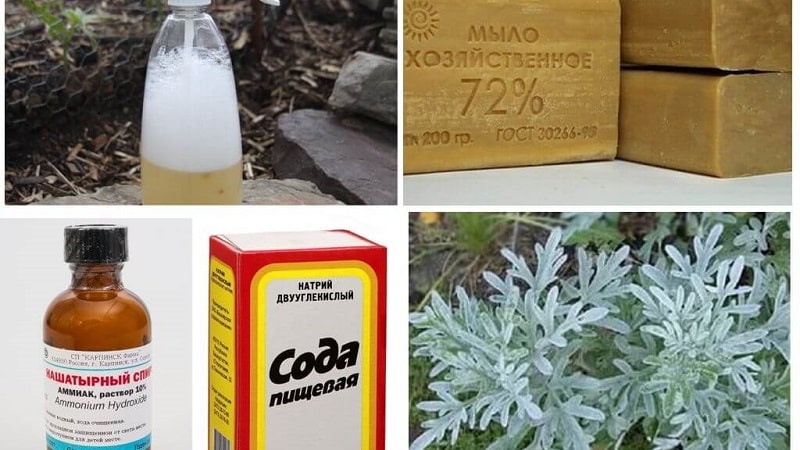
The best products for greenhouses
If appropriate measures are not taken, aphids in greenhouses can multiply as rapidly as in open ground.
It is necessary to create conditions that are uncomfortable for aphids:
- the temperature in the greenhouse should be 22-24 degrees, and the humidity should not be lower than 85%;
- regularly remove dead plant branches and ventilate the greenhouse;
- in winter, disinfect the greenhouse with bleach or caustic soda.
If aphids are present, all methods recommended for open ground can be applied to them. Biological agents that work effectively include introducing ladybugs into a greenhouse and fumigating them with tobacco smoke with the doors tightly closed. Among the chemicals, the most popular in greenhouses are Fitoverm, Entobacterin, and Biotlin.
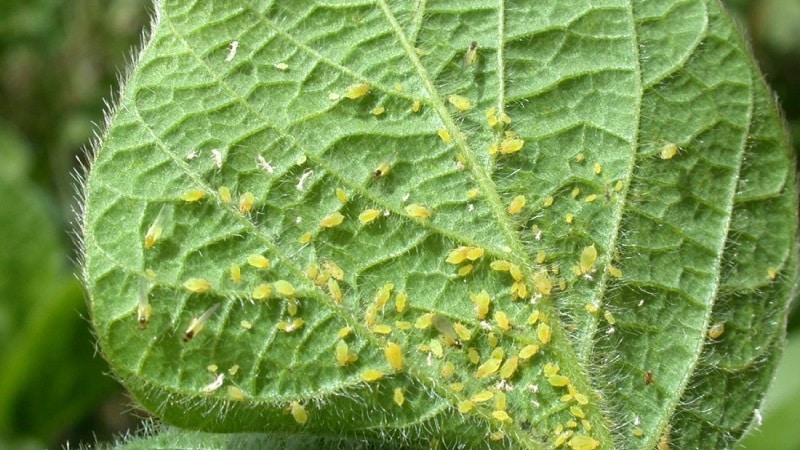
For open ground
The use of outdoor products directly depends on the proliferation of pests. Gardeners should always be on guard: aphids are not particularly picky about where they settle.
If one year she is indifferent to tomatoes, then the next she can settle there. According to gardeners and gardeners, soap solution and ash are recognized as the best folk remedies. Among the chemicals - green soap, Inta-Vir, Fitoverm, the drug Oberon, used at the initial stage of aphid infestation.
Prevention of aphids on tomatoes
To prevent the appearance of aphids in a summer cottage, the following measures must be taken:
- Strengthen plant immunity. Treat bushes with special immune preparations 1-2 times per season or fertilizing with the inclusion of ash.
- Weed and thin the rows regularly.
- Next to the tomato beds, plant herbs that repel aphids: basil, mustard, coriander.
- In autumn, clear the area of debris: burn dry branches and grass. Dig up the soil.
- In the spring, before planting seedlings in the soil, treat the soil with insecticides of the class of organophosphorus compounds - Karbofos or Fufanon.
- Do not overuse fertilizers.
- Fight ants.
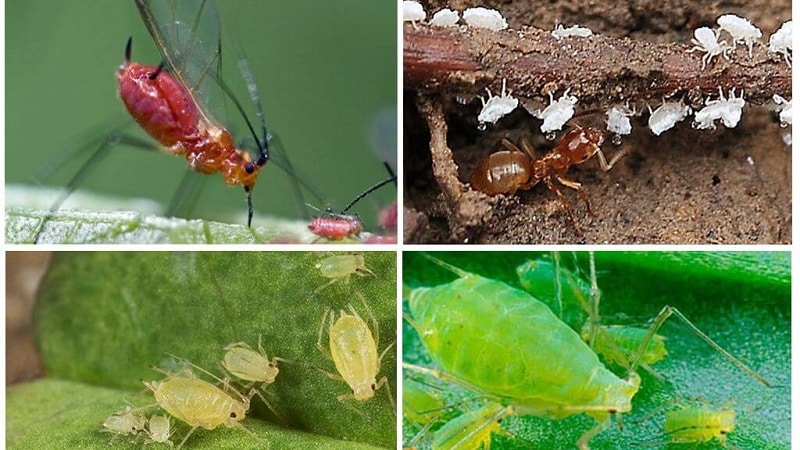
Mistakes of beginner gardeners
Inexperienced gardeners often do not pay attention to signals that there are aphids in the area, and therefore precious time for a quick response is lost, and the pests make their home in the garden.
Signs that precede an aphid invasion:
- Ant activity. Ants are friends of aphids, so if you notice the movement of ants in the beds, it means that aphids will soon appear on the seedlings. What to do? Fight ants.
- Several pests on the branches. This is a signal that they will attract hordes of aphids in a short period of time. Immediately start spraying the plants with what you have at hand: soap solution or ash.
- Rarely weeding the beds. Frequent loosening of the soil is the key to good air circulation between tomato bushes, which is beneficial for plant health. If you grow crops in greenhouses, do not forget to ventilate them more often.
Inspection of plants should be done several times a week, looking under the leaves of the plantings, because this is a favorite breeding place for aphids. The faster you react and apply one of the methods described above, the more effective the measures to destroy aphids will be.

Tips and tricks
The following recommendations will help you effectively exterminate pests without harming beneficial insects:
- If you decide to chemically treat plants, do it in the evening. This way you won't harm pollinating insects.
- Once aphids appear, treatment must be carried out throughout the season. If you relax, all your efforts in May may become fruitless in July. Processing can include all available methods: from folk to chemical.
- Among the specific treatment methods used are spraying bushes with Coca-Cola. Experienced gardeners claim that this remedy is effective. Keep the bottle of Coca-Cola open until the gases dissipate, then add a little liquid soap or dishwashing detergent to help the drink linger on the leaves longer. Put on the sprayer and get to work. To prevent Cola from baking in the sun and harming the leaves, it is better to spray it in the evening.
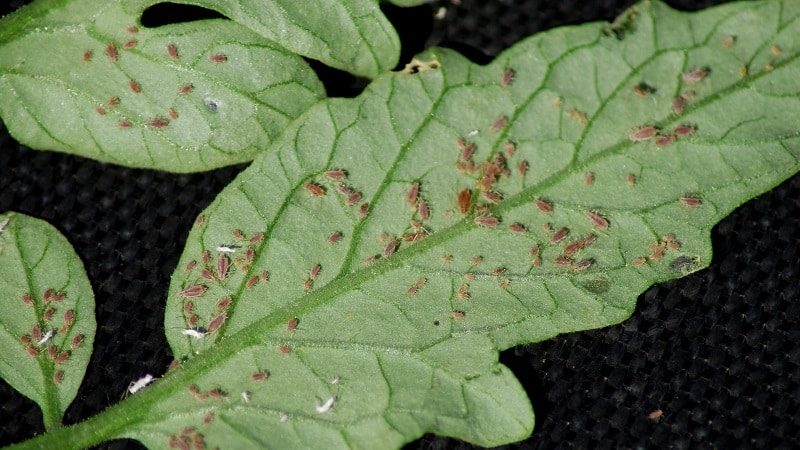
Finally
If you pay attention to the appearance of aphids on tomatoes in time, you can get rid of them without resorting to chemicals. Products such as soap solution, ash, spices in the beds, ladybugs and golden eyes help. But if the infection has reached the scale of a disaster, it is better to turn to effective broad-spectrum drugs.
When starting the fight against aphids, you also need to take measures to exterminate ants in your summer cottage, because they help aphids find new shoots.